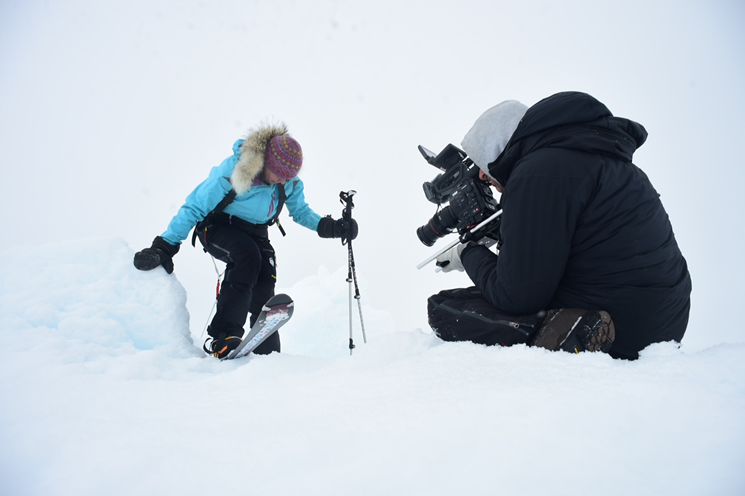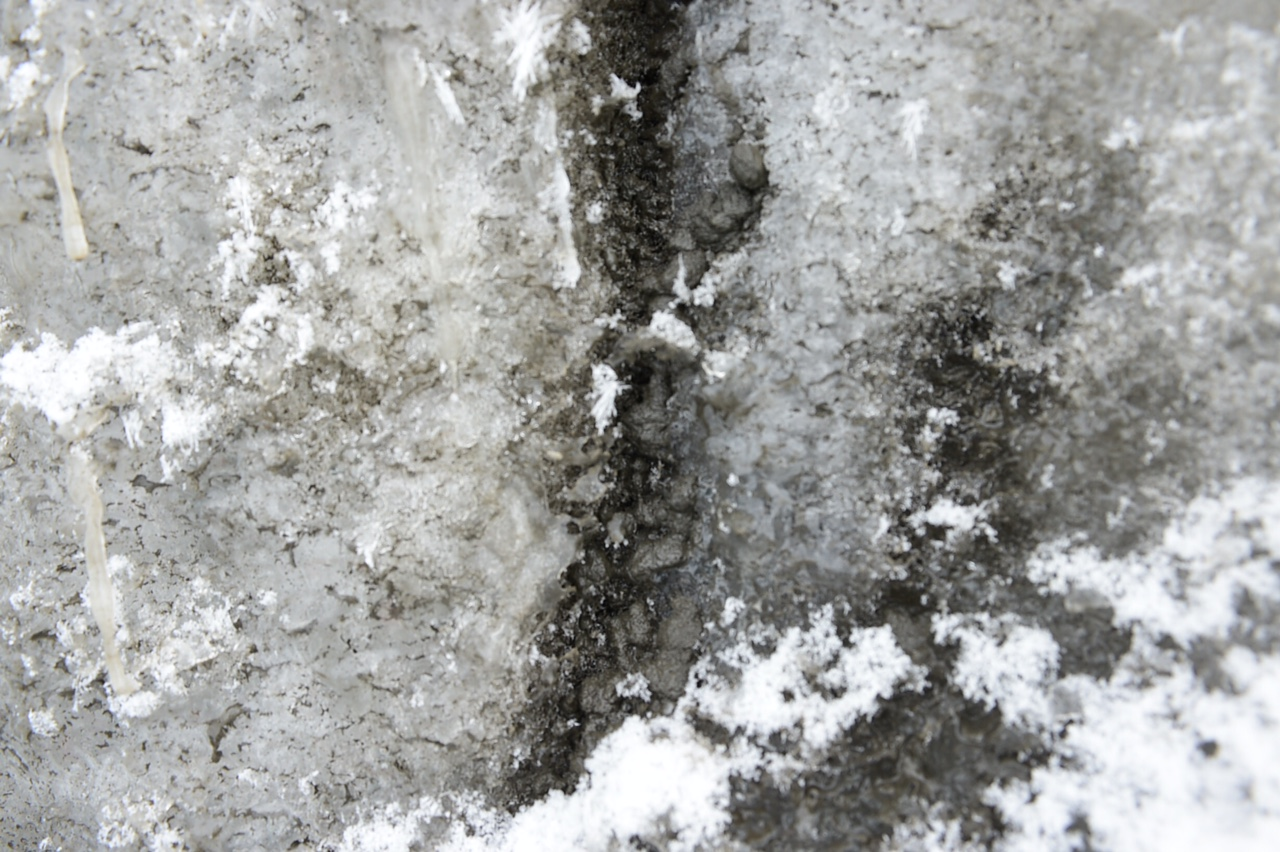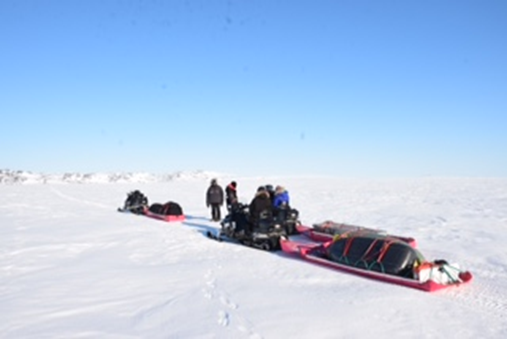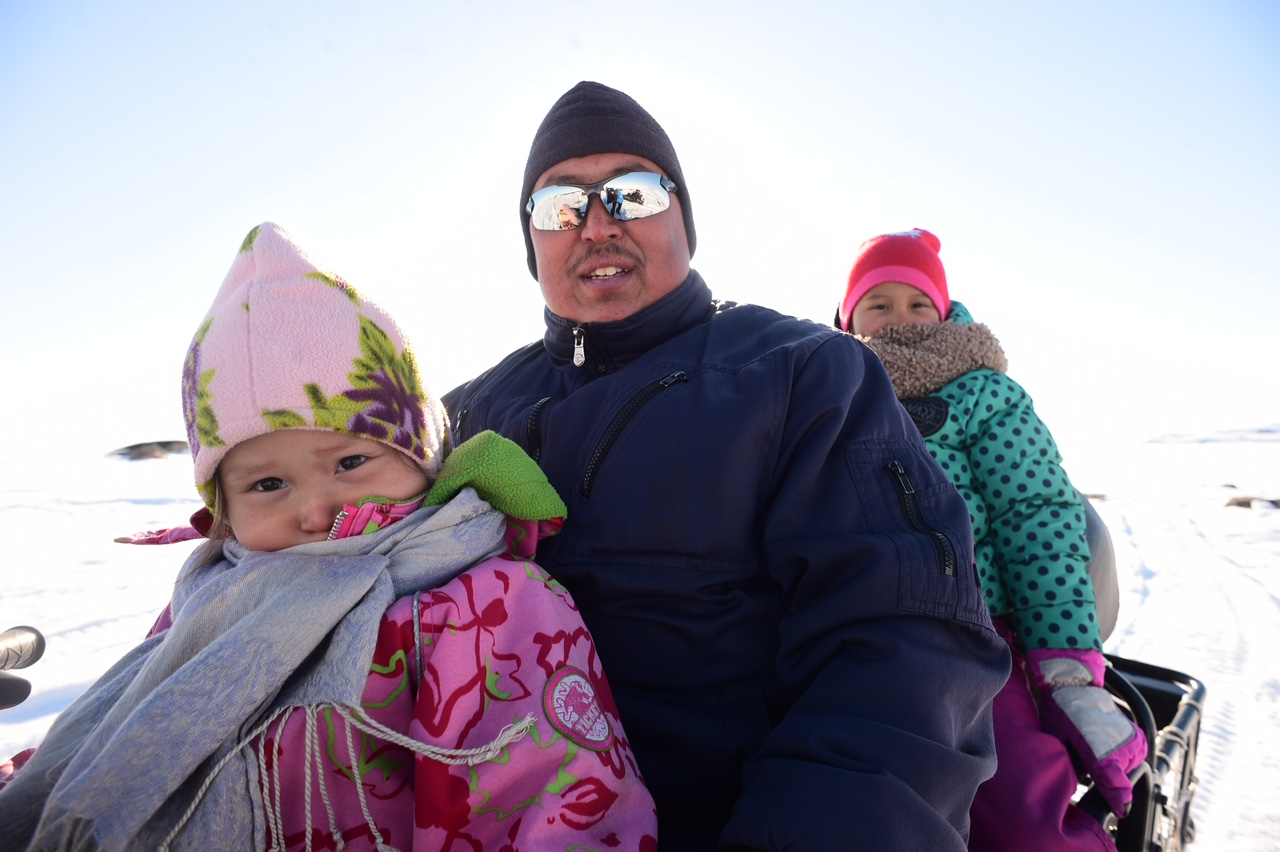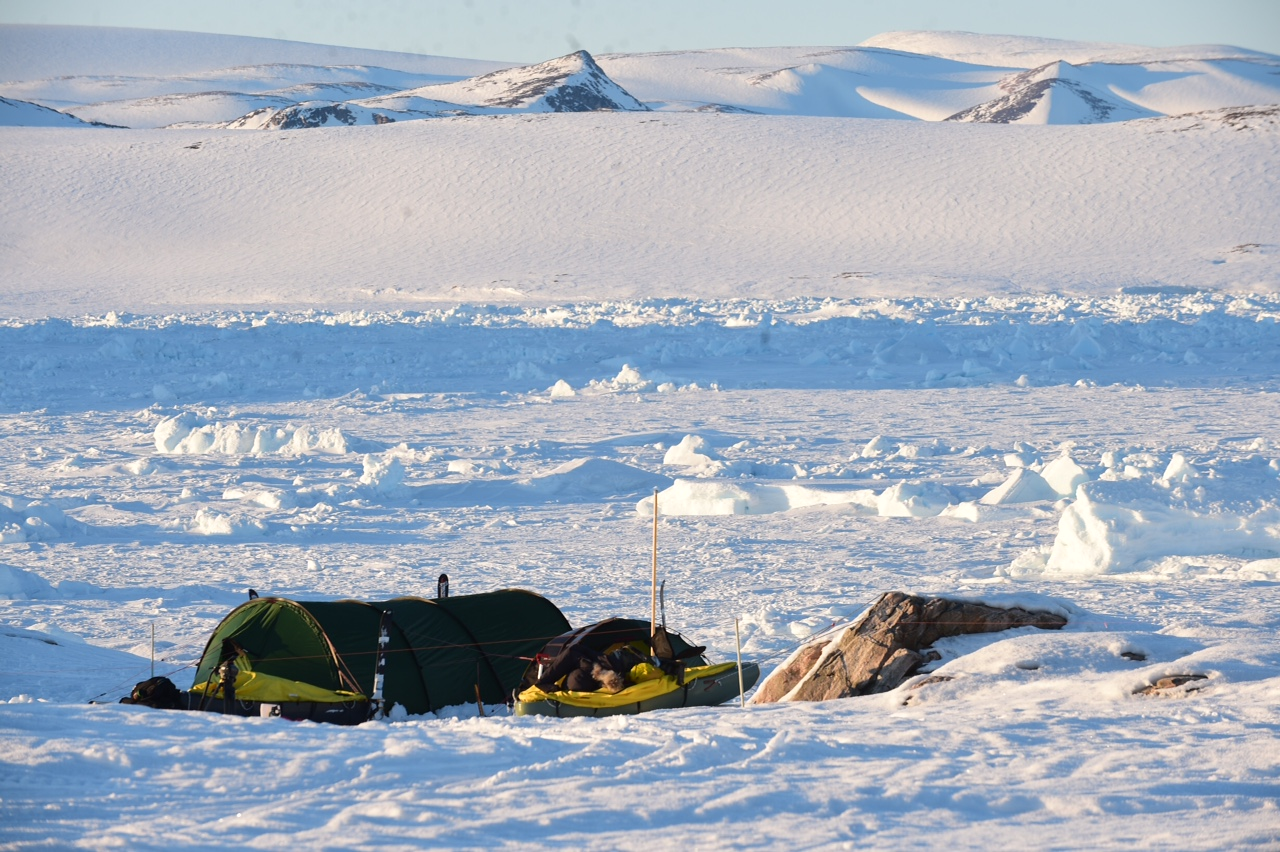Weblog by Bernice Noteboom, climate reporter on Arctic March, a science mission in East Greenland to measure aerosols and black carbon. RIVM supports this research by providing knowledge about air pollution and the effects it has on the climate system.
Location: North East of Ittoqqortoormiut, Greenland
Cloudy, snowing
Temp: -10C to -6C
The ocean is choked with sea ice that drifted in from the North
Pole. Cape Turbin is famous for polar bears and walrus that is why
the village is there. The Inuit here are avid hunters. Within hours
of arrival the sea ice opened up and formed a giant lead, 2 km
across. Lucky for us we are on the right side of it!
At the edge of the sea ice we found an iceberg coated with black stuff. It looks like carbon but it easily could be dirt or ash from a volcano in Iceland. Just to be sure we scraped some of the ice and put in a container to be analysed.
While filming on the water we discovered grease ice that is just forming in the depths of the Arctic Ocean. The pressure ridge we are standing on is 25 m high but 60 m deep with unbelievable green and cyan colors. We watch crystals grow in the water.
Only saw polar bear tracks but no live ones. Nevertheless we put
a bear fence around us that shocks a bear when it comes to close,
flares for scaring it away and a gun if it charge us. Too early for
wildlife, all we see is common eider. But that is a for sure sign
of spring arriving.
People here are completely amazed with our citizen science. The
Inuit think it is magic to have an iPhone with camera to do science
other than text and call. Explaining aerosols and black carbon is
though. Yes even here there is 3G in the village, the northern and
most remote village in Greenland!
